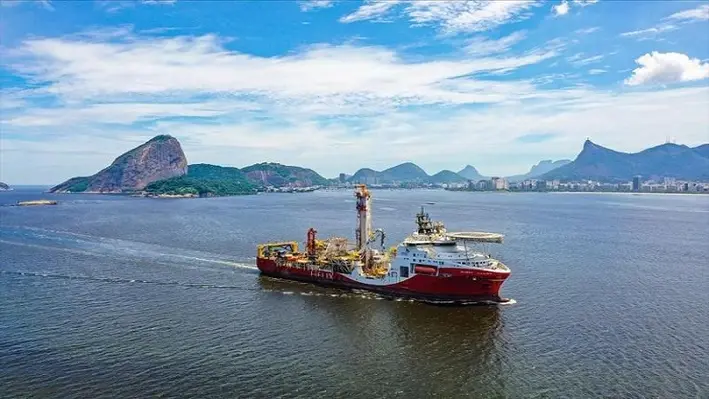

Helix Energy Solutions Group, Inc. (Helix) has extended its well intervention charter and services contracts for the Siem Helix 2 offshore Brazil with Petróleo Brasileiro S.A. (Petrobras).
This will extend the original four-year contract by one year at a reduced rate reflective of the current market. The Siem Helix 2 is now set to remain under contract with Petrobras until mid-December 2022 performing riser-based well intervention activities.
The Siem Helix 2 is a purpose-built, advanced well intervention vessel capable of performing a wide range of subsea services including production enhancement, well decommissioning, subsea installation work, offshore crane and ROV operations, offshore construction work and emergency response capabilities.
Scotty Sparks, Helix’s Executive Vice President and Chief Operating Officer, remarked, “On the back of our recent accommodation and support contract for sister ship the Siem Helix 1 in Ghana for another customer, we are glad to finalise this process and look forward to continuing a long and productive working relationship with Petrobras.
“The Siem Helix 2 has consistently provided industry-leading well intervention services to Petrobras. This extension demonstrates the capacity for Helix to continuously provide innovative solutions to fit our clients’ needs backed by our experience and proven track record.”
Helix continues to make a global impact on the global stage with this announcement coming hot on the heels of its contract for the plugging and abandonment of wells in the Tui Oil Field, New Zealand. Click here for more details on this announcement.
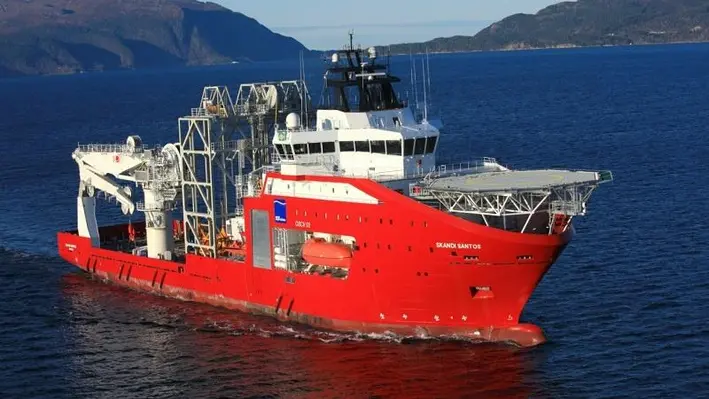

AKOFS Offshore has signed a three- year contract with Petróleo Brasileiro S.A. (Petrobras) for a broad scope of subsea services in Brazil.
The work will be performed by its Skandi Santos vessel which is designed to install and retrieve subsea trees and modules, including subsea structures and manifolds at water depths of up to 2,500 metres.
Currently, the vessel is completing its current contract with Petrobras which began on 1 March 2010.
The services for this contract will commence in Q4 20220. The total contract calue is about US$107mn. AKOFS Offshore will be performing the operations with its partners Bravente for marine services and IKM Subsea for ROV services.
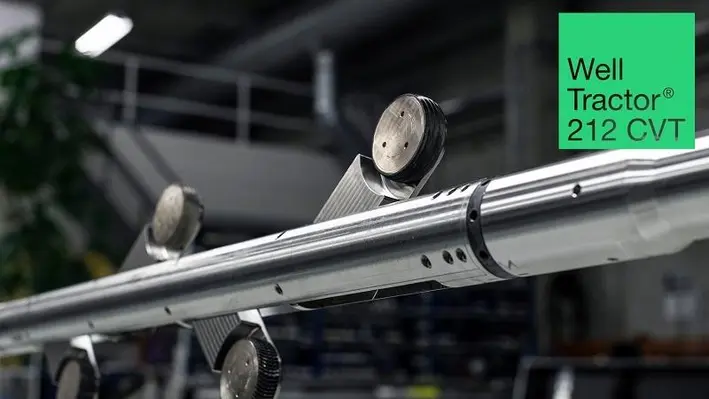
 Welltec has launched a fully revised and transformed design of the pioneering Well Tractor conveyance solution, the Well Tractor 212 CVT, equipped with Continuous Variable Tractoring technology.
Welltec has launched a fully revised and transformed design of the pioneering Well Tractor conveyance solution, the Well Tractor 212 CVT, equipped with Continuous Variable Tractoring technology.
To make operations faster and more efficient than ever before, the new CVT system automatically maximises speed and power at all times, optimising every conveyance run.
Welltec VP Sales & Marketing, Alex Nicodimou, commented, “The Well Tractor remains a key service that we provide, it’s the foundation of everything that we do in conveyance and a solid base for our powered mechanical interventions platform. It’s what started the entire domain of interventions on wireline.
“Now our engineers are bringing something special to the market that will ensure we continue to lead in conveyance solutions.”
In addition to the new Continuous Variable Tractoring system, the new Well Tractor offers a whole host of innovative functionality and performance features, including a heavily revised electronics package that is rated to higher temperature demands within a more robust architecture. It also allows for full two-way surface control that can send commands to the tool downhole and receive diagnostics back at surface.
Traditional conveyance platforms are driven hydraulically by a pump, and in many cases, that downhole hydraulic pump is a shared asset that powers multiple wheel sections downhole. The Well Tractor CVT is configured so that each wheel section has its own power unit. These new hydraulic units and wheel sections are shorter and more powerful than ever before, resulting in a system that operates as multiple individual tractors downhole with inherent redundancy, without compromising on overall length. In the event that any one section meets a restriction of any kind, the other sections remain free to power themselves without any detrimental effect.
Building on more than 25 years of knowledge and experience, the Well Tractor CVT is the next phase in development of Welltec’s conveyance technology.
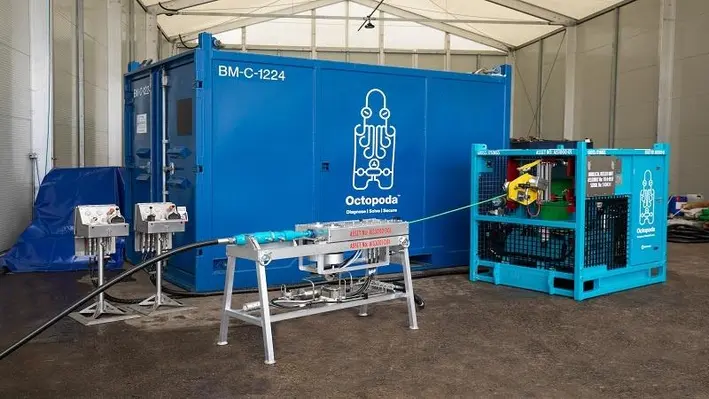

Expro, a leading provider of energy services, has successfully deployed its Octopoda annulus intervention system to restore annulus pressure integrity and return a well to production in Colombia.
The Octopoda system reached 300 meters in the annulus, a world record depth, and sealed the C annulus of the well ‒ thus removing the risk of casing collapse and gas migration to enable the well to produce and significantly extend its production lifespan.
Alistair Geddes, Expro's Chief Operating Officer, said, “Everyone at Expro is proud of this outstanding achievement and the team's extraordinary performance to reach new depths. Not only is it Expro's first venture into the Latin American market using the Octopoda system, but a world first.”
“Octopoda is already proving itself as an innovative and cost-effective solution for solving well integrity issues across the industry. It enables our customers to prolong their well lifespan, making it economically viable to regain production from shut-in wells.”
The value-added intervention operation was completed at a cost that was estimated to be approximately 25% less than the cost of a conventional workover rig-enabled repair and the operation resulted in significantly lower carbon emissions than the conventional alternative.
Octopoda removed the need for a heavy workover rig to allow controlled circulation of annular fluids and the installation of a resin plug at the external casing shoe depth. This successfully sealed the annulus and enabled production to be resumed from the wellbore.
Utilising a unique design, Octopoda is deployed on annulus inlets, removing workover rig requirements, offering an alternative that can be rapidly deployed across all types of installations, onshore and offshore, to maximise operational uptime while reducing overall HSE exposure.
“Expro’s recent success with Octopoda shows the capabilities of this truly unique technology and our ability to optimise and expand the life of the growing number of aging wells around the world,” Geddes added.
“Octopoda is the latest example of Expro’s commitment to investing in innovation, developing new technologies and working towards reducing our own and our clients’ carbon footprint.”
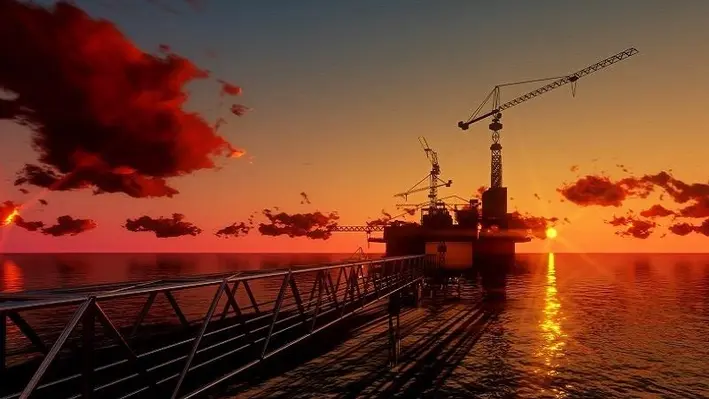

Across three packed, entertaining days, attendees of the Offshore Well Intervention Latin America 2021 conference were treated to a host of presentations and panel sessions featuring industry experts exploring the latest trends, technologies and opportunities shaping the region’s offshore oil and gas industry.
The shift to reducing carbon emissions and increasing longevity of wells is being embraced by operators across the world and it is no different in Latin America. Speakers at the conference discussed how this was a region well positioned to take advantage of the blossoming well intervention and P&A markets and acknowledged the cascade of associated new technologies which have found a home in the region’s waters.
Offshore Network has selected and reported on key sessions from across the conference, which you can find below:
-Secure and efficient P&A of Wells: Artur Barbosa, Business Development Manager at Archer, gave a presentation on secure and efficient P&A of wells, which focused on the company’s Stronghold Barrier setting and Barrier Verification systems, part of its suite of recovery and P&A solutions.
-Sand control simplified: Bhargava Ram Gundemoni, 3M Global Solutions Specialist, showcased how operators can enhance their oil and gas production and how better sand control can lead to better productivity and profitability.
-Accurate tube integrity diagnostics using ‘pulse’ electromagnetic technology: Maxim Volkov, the Principal Domain Champion at TGT Diagnostics, spotlighted how ‘tube integrity diagnostics’ are pivotal to successful well operation, and how ‘Pulse’ electromagnetic (EM) technology can deliver the most accurate metal wall thickness measurements in all completion types, including specialised alloys with high chrome and/or nickel content.
-Bringing RLWI to Brazil: Martin Tardio Velasco, Regional Subsea Services and Wellheads Director at Baker Hughes, led a panel of experts to explore how the uptake of riserless light well intervention (RLWI) in Brazil could be developed, what benefits it could bring to the industry there, and what are the obstacles standing in the way.
-Challenges to integrity and future transformative technologies: Representatives from MADCON Corporation, EV, Quartic Advisory, Petrobras and PetroRio made up a panel to discuss the past, present and future of well integrity and transformative technologies in the pipeline.
-Brazil ripe for well intervention wave: A panel of industry professionals discussed how the Brazilian market is responding to an international drive to well interventions and decommissioning activity.
-Driving forward P&A in Latin American waters: Industry experts explored how new technologies and techniques for cost-effective and efficient decommissioning processes could be deployed, while ensuring compliance with P&A regulations.
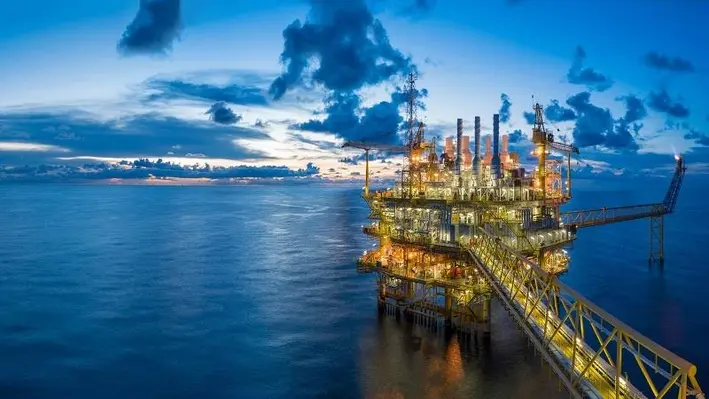
 A panel session on P&A and Regulation at the OWI LATAM virtual conference explored how new technologies and techniques for cost-effective and efficient decommissioning processes could be deployed, while ensuring compliance with P&A regulations.
A panel session on P&A and Regulation at the OWI LATAM virtual conference explored how new technologies and techniques for cost-effective and efficient decommissioning processes could be deployed, while ensuring compliance with P&A regulations.
The session was moderated by Carl Roemmele, Subsea Intervention Director, Baker Hughes. Speakers were Carlos Eduardo, Manager – Technology and Reliability Subsea Wells, Petrobras; Marcelo Matos, Wells P&A Technical Advisor, Petrobras; Joao Guandalini Batista, Wells Technology R&D Manager, Repsol Sinopec; and Katherine Beltrán Jiménez, Research Scientist, NORCE.
Eduardo started by outlining the “strong, robust” processes whereby Petrobras evaluates new technologies to address problems and challenges, with KPIs to determine which to develop and proceed with. The company works with research departments such as NORCE, other service companies and operators to develop these technologies and test them in the field. He added that there is considerable scope for developing new technologies to enhance P&A activities and speed up processes, given the challenges of P&Aing Brazil’s subsea wells, many of which are old.
Being in close contact with the market as well as operators is key to keeping on top of new developments, he said. “We need market knowledge; research departments such as NORCE are key to improving our activities.”
He added that the focus of the company’s development portfolio has been on technologies for well construction rather than P&A. “We need to think more about P&A; we as operators have to establish what our challenges are and where we want to go.”
Marcelo added that there are synergies to be explored with other operators given that they face common challenges in P&A. However he felt “industry can’t wait for the operators to take the lead in development; services suppliers need to play a key role and take the lead, discussing with operators their needs.” He commented that P&A activity in Brazil has been increasing in the recent past due to Petrobras activities and the entry of other operators into the market and the country has a good record in terms of successful P&As.
Batista stressed that P&A is a “multibillion liability for operators; we are hungry for solutions. We are working together to establish partnerships; we need to be more collaborative.” Repsol Sinopic is involved in P&A activities in Brazil in partnership with one of the operators, he said. He agreed that service companies need to be more proactive in bringing new technologies to operators and sponsoring feasibility studies and research to assist with the international approval and regulator approval process.
Roemmele raised the question of how receptive operators are to new technologies versus tried and tested technologies. Eduardo agreed that introducing new technologies is a step-by step process, given the risks compared with established technologies. Jiménez commented that the two main challenges with testing new technologies are ensuring that new technologies comply with market regulations, and finding operators to test them. NORCE tries to ensure that when testing new technologies the risk is reduced to the operator, she added.
Gamechanging technologies
Asked which technologies would be gamechangers for P&A, Jiménez highlighted three specific topics that are leading development. “The first is logging; there is a big trend for logging tools and processing of logging and data interpretation and diagnosis; the second is rigless P&As; and the third is new materials, for example new cement recipes, polymers, nano materials.”
Marcelo highlighted the benefits of a risk-based approach to P&A. “We have a very developed engineering process, and today we can have a better understanding of the risks,” he said. This could enable operators to challenge the validity of prescriptive regulations and requirements, a “hot topic for operators”, he added.
Discussing new and alternative materials, Eduardo said Petrobras is actively exploring and testing new methods and materials, but underlined the need for research to ensure that their longevity could be relied upon.
Marcelo added, “Alternative materials are already a reality; they are not widespread in the industry but some operators are using new elements when they need to or at the end of a qualification process.” He highlighted a case in the Gulf of Mexico where an operator had to execute a P&A using resin. “We are seeing increasing utilisation of bismuth alloys as a barrier.” He suggested that the usage of alternative materials could be accelerated. However, Jiménez pointed out that new materials could be more expensive.
Turning the discussion to total cost of field ownership, a current focus for the industry, Roemmele asked whether there is a vision for the future of P&A at the well drilling stage.
Jiménez underlined the “change in mentality” needed in drilling for abandonment. “We need to think about the abandonment phase at the well drilling stage, not just about getting the well to produce quickly,” she said, suggesting that the design of wells could be changed so that it is easier to abandon at a later stage. She expressed the hope for “more disruptive change in the way we abandon wells” and more new technologies implemented in the field.
Marcelo said that Petrobras’s vision of the future is of a “self abandonable well, where the completion would carry the materials and technologies required for you to just push a button, and achieve a permanent barrier.” This would mean the P&A cost for the well would be zero, but “there is a long road before we achieve that.” Marcelo foresaw a step change in P&A cost reduction thanks to new technologies and techniques.
Critical role of data
Eduardo raised the challenge posed by the possibility of changing regulations in the future, and it was felt that data and digitalisation has a critical role to play in this context. “If regulations change, we can use data to design a new reality,” said Batista. He explained how Repsol is embedding sensors in the well to monitor conditions and provide data, leading to a predictive approach for well integrity and enabling a true risk-based P&A design.
“More sensors equals more data equals easier decisions,” said Roemmele, pointing however that access to data is often a challenge, and data is not always transferred when ownership changes.
Roemmele raised the issue of carbon capture and storage (CCS). “Could this be a future opportunity and do we have enough knowledge to use some of these wells to reverse the flow?”
Batista underlined the link between P&A and CCS issues and challenges, and felt geothermal offers particularly strong potential. However he urged a cautious approach; while the idea of re-using the well is attractive, and would effectively reduce P&A costs, it could pose engineering challenges; efforts would be needed to ensure the integrity of the well, after years of use, possibly in difficult conditions, would be up to supporting a new application. “More data and more interventions are needed to better understand the real condition of the well,” he suggested.
Echoing this caution, Marcelo questioned whether a well built for a different purpose with different technologies 25 to 30 years ago would be usable for the next 30 years or more, and whether CCS made sense in the Brazilian scenario, given the location of fields in deep water far from shore. Jiménez agreed a regional approach is needed, commenting that while Norway, with its focus on reducing emissions, is leading CCS research, the infrastructure needed to compress and transport CCS may not make sense in Latin America. She further pointed out that further research is also needed on the behaviour of CCS and its reaction with cement.
Summing up, Roemmele concluded that Brazil and Latin America already have a good record in terms of successful P&As, and that openness to new technologies and techniques, supporting new research, risk-based modelling, sharing data and collaboration between regulators, operators and service companies are key to successfully driving forward P&A in the future.
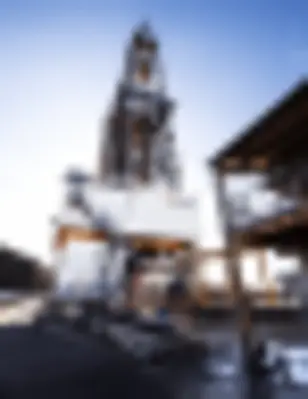
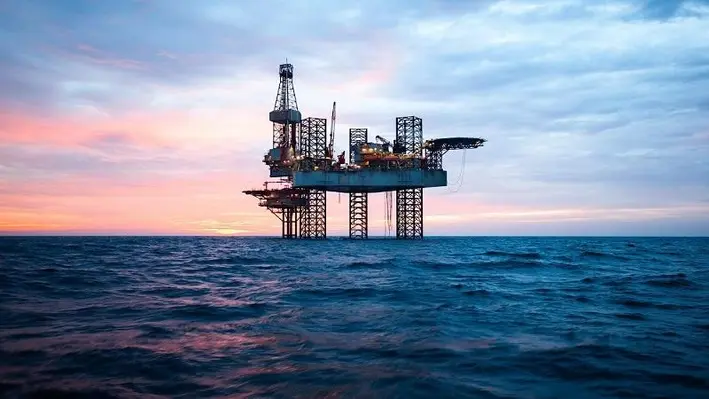

During a virtual webinar at the OWI LATAM 2021 conference, Maxim Volkov, the Principal Domain Champion at TGT Diagnostics, spotlighted how ‘tube integrity diagnostics’ are pivotal to successful well operation, and how ‘Pulse’ electromagnetic (EM) technology can deliver the most accurate metal wall thickness measurements in all completion types, including specialised alloys with high chrome and/or nickel content.
On the importance of wall thickness measurements, Maxim explained that such figures can help deliver a safer and more precise calculation of burst pressures for tubing and perhaps more importantly, casings. Well operators need to maintain wells within the ‘Maximum Allowable Wellhead Operating Pressure’ (MAWOP), and calculating the most accurate burst pressure figures are key to achieving this.
In terms of conventional technologies, such as multi-finger callipers, flux leakage tools, ultrasound inspection, and older EM tools, there is a general lack of accuracy or capability to assess casing behind tubing. This is traditionally solved by pulling the tubing out of the well using expensive rig or hoist operations to expose the production casing as the primary metal surface. This obviously disrupts well operations and requires significant resources and energy utilisation.
New electromagnetic surveys provide a more efficient solution, and are able to supply wall thickness estimations of multiple casing strings up to 20” diameter, to an acceptable level of accuracy.
‘Pulse’ technology
The ‘Pulse’ platform is one of four technology platforms that make up TGT’s ‘True Integrity’ diagnostic system. Pulse is used by analysts and operators to provide an accurate barrier-by-barrier assessment of up to four concentric tubulars from a single through-tubing deployment. And unlike conventional systems, it works in all completion types, including dual string and corrosion resistant alloys.
Pulse combines advanced electromagnetic sensing and measurement technology with powerful modeling and analysis capabilities. Pulse features multiple coil sensors, each optimised by length and geometry to engage with a particular tube size. This enables it to assess the electromagnetic signature of each tube and establish wall thickness variations.
Using electromagnetics to diagnose the condition of multiple tubulars is the most reliable solution currently available for tube diagnostics. The technique is sensitive to metal only, and is free from scale or cement influence, helping it provide a reliable wall thickness assessment where the other technologies fail.
Also, EM diagnostics can be deployed while the well is active, with minimal impact on operations and cost.
Pulse deployment
Pulse can be deployed in multiple configurations with multiple sensors optimised for different tubing and casing scenarios. Short sensors can target tube diameters up to 4 1/2", with long sensors targeting up to 13 3/8" in diameter, and extra long targeting up to 20".
Coils transmit a repeating EM pulse and record the electromagnetic response, with each coil sensor capable of registering responses from different layers of casing and tubing in the well.
Multiple coil sensors are optimised to scan a different radius, enabling operators to determine which layer is being affected by corrosion and to what degree.
Pulse diagnostics delivers accurate results up to ±0.25mm for first tube, ±0.75mm for second, ±1.5mm for third, and ±3.6mm for the fourth metal barrier.
The utilisation of Pulse technology is helping the industry to keep wells safe, clean, and productive.
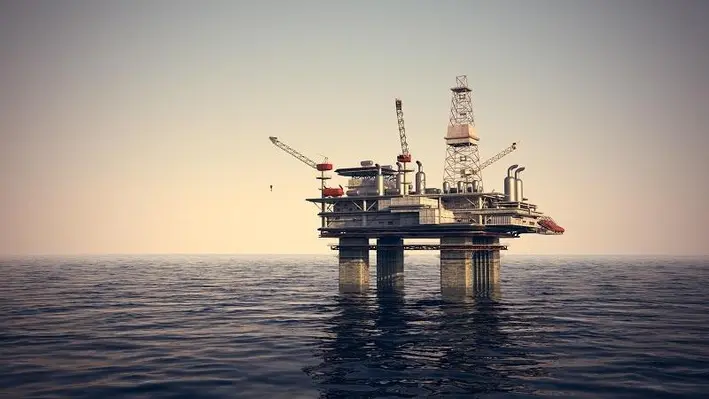

At the Offshore Well Intervention Latin America conference, a panel of industry professionals discussed how the Brazilian market is responding to an international drive to well interventions and decommissioning activity.
David Carr, Senior Vice-President at Helix Well Ops (UK) Ltd, opened the session with a video discussing the recent developments in the international offshore community. He noted that despite the last 12-18 months being one of the most challenging in living memory, well intervention activity has suffered less than most and, according to RigLogix, in a period where drilling activity reduced by almost 35%, well intervention activity only declined by around 21%.
On top of this, Carr continued, there have been positive signs from within the industry with companies such as Harbour Energy, Equinor, C-Innovation and Petronas planning or conducting significant intervention work. Carr added, “In Latin America operators have returned to profitability but drilling activity has not really increased ‒ partly due to the need to pay off debt and the turn to renewable energy. However, depleting reserves need to be replaced and intervention is the lowest cost and risk way of doing this. More and more companies are entering the riserless light well intervention (RLWI) space, resulting in more innovations arising in the market. Additionally, oil and gas regulators are gaining greater powers to enforce policies to maximise economic recovery and ensuring operators fulfil their decommissioning obligations.”
Lucas Mota, Manager of Financial and Physical Planning at Petrobras, noted that his company has made a strong statement in maximising their portfolio value with a focus on deep and ultra deep waters and already there have been key intervention targets identified in order to keep up with production targets. He added, “Petrobras has a strong workover portfolio so we are looking closely to new technology and opportunities to get the most out of our producing fields. The pandemic has affected the scenario for workover activities and we have seen reductions but we have gained back momentum and expect to be back to pre-pandemic levels starting in 2022. Being resilient, being cost effective, and introducing new technology will be paramount for making sure we meet production targets and keep extraction costs low.”
David Dempsie, P&A Task Force Leader of Global Drilling & Completions at Repsol, noted that in general terms operators are constantly looking for the “the best bang for their buck” and the benefits of intervention is we typically understand better objectives and targets and are therefore more sure of outcomes.
“To further increase production, the ability globally to drill becomes hard at times. Licences to drill take more time whereas interventions are faster to react and they align well with many regulatory requirements. Such a period of uncertainty with oil prices means relying on high cost drilling activities is not always appropriate anymore whereas intervention is much more cost effective.”
Providing a detailed update on the state of the offshore oil and gas market in Brazil, Mariana Franca Operational Safety & Environmental Superintendent at ANP, noted that even in the most challenging times, oil production has increased ‒ as was the case in 2020 which has been maintained across 2021. She noted that as a regulator, her company is working to incentivise operators to increase the recovery factor and that they have witnessed a decrease in drilling in this time. There are also hopes that plug & abandonment (P&A) activities will increase as operators take their liabilities more seriously.

A decommissioning wave on the horizon?
On the subject of P&A and decommissioning, Dempsie said that generally as the industry and fields of a region mature, the companies active in there mature. While there is a tendency to delay such operations companies can no longer afford to do so due to environmental concerns.
“As confidence grows and the number of P&A operations increase, it has an effect on operators and service providers to do more. When this happens, abilities increase and costs decrease. The appetite is starting to be there. Overall, this has somewhat been kicked down the road but it can go no further. People need to understand they have reliability to do better.”
“In Brazil the deepwater elements pose unique challenges but subsea contractors confidence builds the more work that is performed and this will allow greater progression and natural growth will come as one operator to another does more. P&A, when I arrived in the market, was something for my grandchildren but it has crept up. It is a market which will grow as Brazil invests and will strengthen operators to create a more sustainable business plan.”
To encourage more activity of this type, Franca stated that new well integrity management system regulation was published in 2016 which addresses P&A obligations as before it was old fashioned. With the new system, they are aligning Brazilian regulation with best practices. Now, for example, liabilities are harder to be extended and there is a maximum period of three years for well to be idle without monitoring well integrity.
Building on these comments, Mota said that for his company decommissioning and enhancing production is of paramount importance. They have a five year plan amounting to US$4.6bn and more than half of that is being spent on well intervention costs with around 500 well interventions planned in the next ten years. They are also targeting efficiency in these activities. The company currently has achieved 40 days per abandonment well and is aiming to reduce this to 30 days per well.
Reducing costs
One of the main issues relating to P&A, decommissioning and well intervention is they can carry weighty costs for operators. The panellists addressed this concern, noting some trends which could reduce costs and encourage more of these activities in Brazil.
For instance, Mota noted that RLWI is being taken up more around the world and is a method which can bring reductions ranging from 40-50% in time and costs. There is a lot of interest in this in Brazil and from his company.
Dempsie added that collaboration is key to this and many operators are looking to work together on P&A and intervention campaigns to capture value on these necessary operations. He said, “This has worked well globally under various guises and it suited the economic needs of many organisations.” Rig clubs, for example, have been looked at elsewhere and could really help companies share risks and shoulder costs in Brazilian waters.
Additionally, as the panellists touched upon, the continued development of new technology is enabling operators to better understand when wells require P&A and intervention work and is allowing them to carry it our more safely and for less money. This will only encourage those active in Brazil to pursue such activities more aggressively.
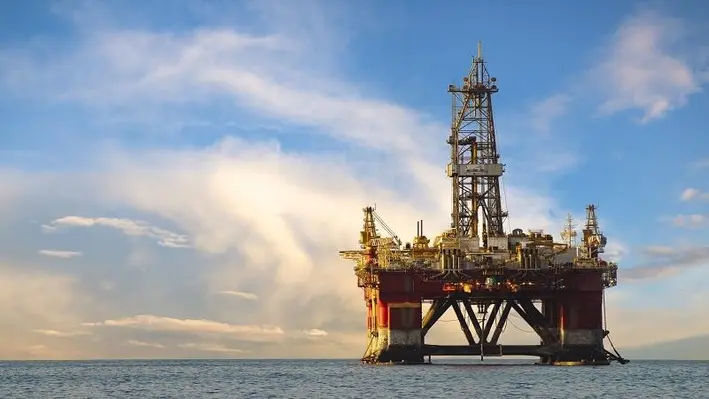

Offshore Well Intervention Latin America 2021 bought together a number of industry specialists to discuss the past, present and future of well integrity and transformative technologies in the pipeline.
Representatives from MADCON Corporation, EV, Quartic Advisory, Petrobras and PetroRio joined the panel to tackle the current challenges and transformative technologies that could rise to meet them.
On the key challenges facing well integrity, Ivo Foianini, Business Development Manager at EV, explained, "Overall, the issue of the use of cement has always been a problem. The way wells have been designed in the oil field has been a problem for the focus of either remediation for well integrity or abandoning wells. Cement is a great product to hold structural integrity and withstand the passage of fluid, but being able to properly place it behind pipe and detect where it is behind pipe is difficult. It remains a challenged route.”
"The other problem, as I see it, is corrosion. We use two components that don't age well- cement and steel. People have tried to reinforce steel with a lining, casing or resins, but, in general, we're using 20th century technology for the 21st century. We need to find ways to support them with better products or use new products from the future."
Vincent Stephane Geyl, Well Integrity Advisor at Quartic Advisory, added, "What I see as a technical challenge is data gathering. Conducting sufficient testing, gathering trends and analyses and combining them, is still a challenge.”
"All this data, designs, analyses and tests feeds into decision-making. The focus on making good decisions is much higher, but making decisions based on all the data is harder."
Jorge Ricardo Siqueira, Well Integrity Consultant at PetroRio, continued the discussion as the panellists turned to the innovative technologies to help combat the above problems and ensure well integrity in the long-term, the panel discussed designing wells for abandonment. Offshore areas in the North Sea and Gulf of Mexico are in the midst of a plug-and-abandonment wave, with post-plug wells not leaking after abandonment being at the forefront of many modern wells' designs.
Foianini explained, "It's an excellent idea- designing wells for abandonment. It gathers the well integrity aspect in it from a high level perspective. Operators don't have to deal with as many well integrity variables, because they're designed to be abandoned in the future."
Geyl continued, "New materials are the way forward- cement is just the lack of a better option. We've seen the deployment of bismuth in the North Sea as a barrier, putting minerals and elements as a barrier. There's a lot of work around exothermic reactions, to melt rock and casing to create a barrier.”
"One of the things I find so challenging is using the formation as a barrier. The solution is varied- using rock to seal is one of the best approach but it is tricky to demonstrate that each rock formation is sufficient enough to act as a barrier. We've seen efforts to recreate and re-mineralise formations within the well, but it's far ahead, in the future."
Bruce Trader, President of MADCON Corporation, contributed, "One company we're working with are a resin manufacturer in Louisiana. Resins have been considered for a while but they're working with the weight and density to improve the cost effectiveness."
"We are discussing how to use salt and rock as a barrier- it's not easier, but we are discussing it in Petrobras and with our clients- the challenge is to be sure we're doing it in a safe way," concluded Daniel Muller, Manager of Well and Subsea Integrity at Petrobras.
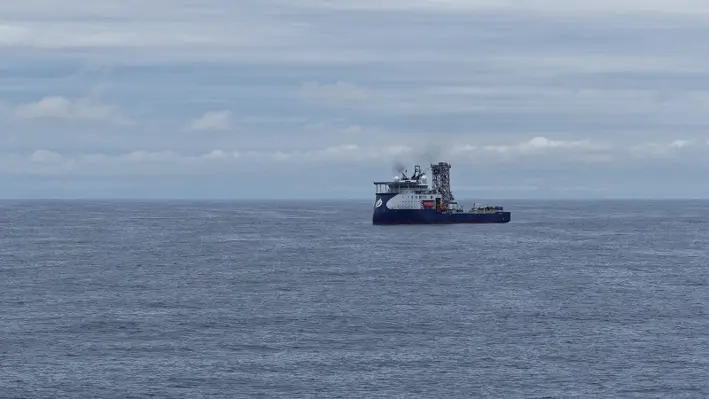

As part of the Offshore Well Intervention Latin America conference Martin Tardio Velasco, Regional Subsea Services and Wellheads Director at Baker Hughes, led a panel of experts to explore the uptake of riserless light well intervention (RLWI) in Brazil could be developed, what benefits it could bring to the industry there, and what are the obstacles standing in the way.
Setting the scene
Velasco opened the session with a short presentation on current state of the RLWI market and the offshore industry in Brazil. He noted that, according to Rystad estimations, the break even price on downstream projects had dropped to US$50 per barrel, down 10% in the last two years. In Brazil specifically, the break even price had dropped 30% in 2014-2018, falling a further 15% since then. Lower break even prices favour less drilling and maximising production from existing wells and this reduction has also largely been driven by innovations within the oil and gas industry.
Combined, these factors make an ideal setting for RLWI, a method of intervening subsea wells bringing operation efficiency, lower rates and overall much lower costs compared to semi-subs.
Velasco commented, “RLWI vessel days are rising across the globe. Brazil, however, is still somewhat of a virgin territory for it. We see a huge opportunity there and we think the market will change in that direction. The country has around 600 christmas trees installed outside of the last ten years and the significant age leaves room for both enhancement and P&A, especially from RLWI vessels.”
Switching to RLWI
Matthew Vick, Senior Subsea Wells Engineer, BP, noted that he had noticed a real shift to riserless in the last three/four years and his company had been making use of this method in regions such as the Gulf of Mexico (GOM) and Angola as the relaxed cost pressures (and the speed of mobilisation) makes it a much more economical solution.
He added that working in Angola would be similar to Brazil as there was a lack of expertise around RLWI. To patch this hole in the talent pool, BP took supervisors from the region to GOM to gain experience with the equipment.
Vick commented, “Most of the skills we need are available in the country from wireline tubing to pumping etc ‒ this is the standard bread and butter. It is just a small piece around well control equipment which is the last step. It takes some time to build that on experience but you can get there by identifying key individuals and building their experience in other regions.”
Echoeing these sentiments, Colin Nicol, Senior Operations Leader, Baker Hughes, said, “It is hard to take on new technology in less mature regions and sub-Saharan Africa is a good example. There are experience gaps, onshore and offshore so you need to identify the prevailing skills similar to the ones you need and identify the core people to train. We work with regional people but it has also be necessary to supplement them with senior personnel from GOM etc. Ultimately, we want people from the region to be comfortable with the assets prior to it arriving and make it sustainable in order to bleed back the amount of experienced people we need to parachute in. At some point you can then step away and make the region self-sufficient for RLWI operations.”
Velasco added, “There is a wide talent pool in Brazil and it has usually been quick to set up new technology. An example is the evolution of deepwater where it is now exporting talent for deepwater operations and I see similar potential with RLWI.”
P&A opportunities
Another opportunity for RLWI comes in the form of vessel availability. Nicol noted that the renewable market is gradually eating into the vessels used by the oil and gas industry and are using them on long term contracts. Particularly popular is larger vessels with bigger decks and high capacity cranes. With competition over rigs bound to drive prices higher, many operators may well turn to lighter vessels in order to enhance production on their assets or fulfil their obligations around P&A.
Continuing on the topic of P&A, Velasco commented, “In Brazil we still have some room to catch up in terms of P&Aing wells, a lot often get delayed. We foresee that with new regulations inbound this work will start picking up.”
The panellists noted that this trend could spell further opportunities for RLWI in Brazil as lighter vessels are able to perform such operations more efficiently and quicker, resulting on cost saving on what is traditionally an expensive venture. Additionally, RLWI capabilities are rapidly advancing. New technology allows RLWI to perform lower completion abandonment, cut and prep for pulling tubing and even tools to allow cement barriers to be placed across multiple annuli, making them a more viable option to rig based vessels.
Enhanced HSE
With ageing wells in Brazil also comes the problem that many were not designed to support the weight of some of the newer rigs entering operations. This can cause potential problems if the stress cannot be supported, a challenge much less severe to RLWI vessels.
Vick added that there are many other HSE advantages of utilising RLWI over rig-based operations. He noted that, for instance, on rigs personnel are much more exposed to hydrocarbons, often around ten metres from potentially flammable gas etc. Whereas on RLWI the well is isolated to the tree itself and the only hydrocarbons coming to surface is when taking the lubricator out or residue gas from testing. This is a big HSE risk reduction and improvement in personnel safety.
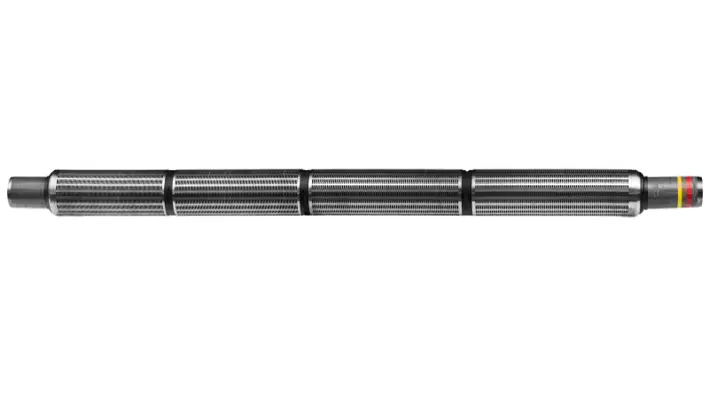

Presenting in a virtual webinar at OWI LATAM 2021, Bhargava Ram Gundemoni, 3M Global Solutions Specialist, showcased how operators can enhance their oil and gas production and how better sand control can lead to better productivity and profitability.
Beginning the presentation Ram spoke about simplified sand control and the general key performance drivers in sand control selection which are reducing equipment and personnel footprint, risk reduction to enhance safety and durability and finally, operational excellence - for increased productivity and increased return on investments.
Challenges and current market needs
The general market needs are to increase productivity for less cost and achieve less risk to failure. Traditional practices used for the Sand Control Selection (SCS) process are based on mature technologies and methodologies that often fail to meet the key performance drivers. Mature technologies often rely on a metallic filter media which is used as the mechanical sand control barrier downhole. Metallics filter media metrologically has erosion limits that constrict the boundary condition of hydrocarbon productivity. If a more erosion resistant filter material can be utilised, the upper safe operational window can be extended limiting the risk of erosional failure and hot spotting of the downhole sand control system whilst optimising asset recovery where possible. In addition, offering greater longevity to downhole sand control through a material change reduces the reported millions of dollars companies employ in repairing wells with failed sand control.
Disrupting the traditional sand control approach
The solution is a change of metallic filter media to ceramic filter media of the screen. This has been achieved by integrating a full-body ceramic part in the form of rings on a pre-perforated base pipe on to which ceramic rings are stacked and hold with two end caps and with an external shroud on top. The stack of ceramic rings creates a slot opening which is designed for the application spec-in and the ceramic material at the inflow offers erosion resistance and therefore mitigating the hotspotting potential ‒ allowing the operator a wider operating window of productivity.
Ceramic Sand Screens have been proved by deployment in the industry both in green fields and in intervention wells, delivering operators Operational simplicity, Reduced HSE Risk at lower Capex delivering higher productivity. In some cases, Ceramic Sand Screens has been an enabling technology to unlock production potential with faster return on Investments.
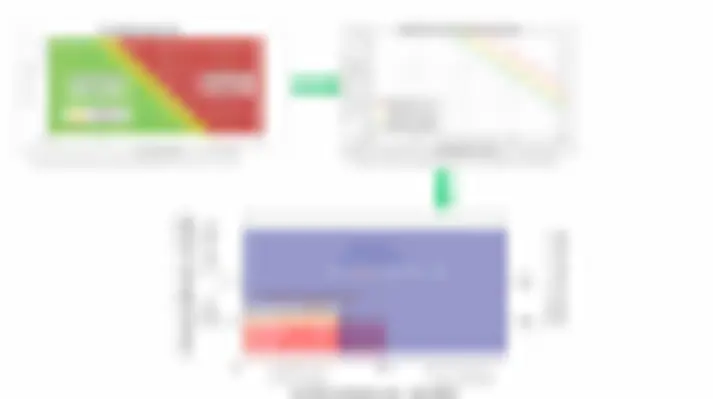
Standardised field-wide approach with simplified stand-alone screen sand control
Ceramic Sand Screens unlocks the operator methodology to achieve a simplified and standardised sand control approach in wide range of reservoir conditions and well architecture as downhole sand control system in OH, cased hole on a rig or through tubing rigless applications. Ceramic Sand Screens have been deployed and delivered success in applications with homogenous, heterogeneous, well-sorted to poorly sorted, low to high fines reservoir of sand properties.
Uphole recompletion using ceramic sand screens in the Latin Americas.
Customer challenges:
The operator posed challenges such as recompleting an interval by installing a sand control through existing completion without the removal of tubing or utilisation of a” big rig”-side track. The well contained high gas rates, high flux velocity and impingement velocity through short net target zones which were expected. Non-uniform, unconsolidated sandstones, and aggressive nature of sand due to its morphology was also a critical factor in planning.
Solution:
A simple stand-alone screen solution to withstand high gas rates and across the perforations with cost-effective and deployment on a rigless wireline deployment method. The operator defined erosion testing to prove 200ft/s flux velocity prior to the sand pack.
Results and Value creation:
Adding more than 100mn scuffs per day (MMSCFD) to the asset from the zones left behind casing improved productivity and the results showed low skin of just one after 1.5 years of production and in some cases, zero skin was also recorded.
This application was further replicated in seven gas and two oil production wells with high production from short, perforated zones with flux velocity calculated to be 100 to 120 ft/s.
Low capex and high productivity: Marginal fields in Indonesia with ceramic sand screens
Customer challenge:
The operator had to deal with marginal reserves with stacked reservoirs - a challenging low-cost environment. The expected production rates from short, perforated interval leads to high flux velocity and under heterogenous sand particle distribution increases the risk to erosion failure. A downhole sand control solution required to address these challenges. A rigless deployable solution was critical to meet field economics.
3M solution:
Proven high erosion and hot spotting resistant ceramic screens enabled the operator to set the screens across the perforation zone deployed on slickline with one or two pup joints to space out the lower completion depending on perforation interval.
Value creation:
The operator achieved cost savings of up to 70% compared to the previous sand control approach. Diverging from traditional sand control methodology, embracing ceramic sand screens technology as a solution approach in a heterogenous sand particle distribution, not only drove savings on CAPEX but also enabled increase of reservoir deliverability by more than 200% of average cumulative gas produced, High erosion resistant screen properties were a key technology driver in this performance. With a more simplified and faster deployment methodology this approach has enabled the operator to maximise operational excellence in activating more wells in a year. Ceramic sand screens are now considered as standardised sand control technology and methodology within their assets.
As of August 31 2021, 3M has completed 115 installations for sand control with users consisting of 50% oil producers and 50% gas producers. According to 3M, the product also meets ISO 17824 / API 19SS Standards.
To learn more about Ceramic Sand Screens, visit https://www.3m.com/3M/en_US/oil-and-gas-us/ceramic-sand-screens/
If interested in such a simplified solution to unlock the production potential assets by addressing sand control challenges, contact Bhargava Ram Gundemoni:
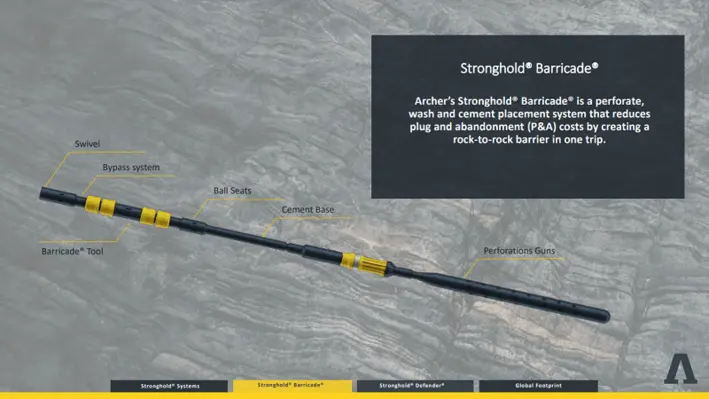

At the OWI LATAM 2021 conference, Artur Barbosa, Business Development Manager at Archer, gave a presentation on secure and efficient P&A of wells, which focused on the company’s Stronghold Barrier setting and Barrier Verification systems, part of its suite of recovery and P&A solutions. The presentation demonstrated how the Stronghold systems provide an economical and effective alternative to traditional plug and abandonment (P&A).
Barbosa started by giving an overview of Archer, a global oil services company with a 45-year history and strong focus on safety. Its solutions support drilling services, well integrity, intervention, P&A and decommissioning. The company operates in 40 locations in 19 countries across the globe, with more than 5,000 employees.
“In our current portfolio we have 33 platforms, three subs, and two modular rigs, where we are responsible for operations, maintenance and certification of drilling equipment on these assets; rental division providing specialised equipment for offshore operations; engineering solutions for enhancing customers’ assets performance; cased hole wireline services; and oiltools, which provide solutions for well cleaning and cementing, slot recovery and P&A,” he explained.
“Archer can provide all these services in an integrated services contract model, reducing the interfaces with subcontractors and making Archer the focal point of drilling and well services activities,” he stressed.
Barbosa gave an outline of Archer’s wide-ranging capabilities and solutions across the well lifecycle from exploration and development through workover intervention, to abandonment and slot recovery. He emphasised that Archer can provide the customer full life cycle in P&A and slot recovery solutions for cut and pull, casing exit and barrier setting and verification.
“The advantage of the Stronghold barrier system is it eliminates the need for milling during P&A operations,” he explained.
“For barrier setting, the Stronghold Barricade system is designed to perforate a selected casing section, wash and clean and set a permanent barrier,” he said. It reduces P&A costs by creating a rock-to-rock barrier in one trip.
“The Barricade Plus is an improvement on the system; it deals with higher circulation and pressure and bypass capabilities, and is designed to deal with larger casing sizes,” he continued.
“For barrier verification we have the Defender, which is designed to verify the integrity of the barrier, and it’s the most efficient way for us to P&A a well.” It enables operators to perforate and test an annular barrier in a single trip.
“The Fortify is an improvement on this system, with a unique pressure verification system,” he went on.
Barbosa added that the company has conducted more than 200 successful jobs all over the globe, resulting in US$250mn in savings for customers.
Barbosa explained in detail the schematics and operation sequence of the systems, and shared some technical paper references where these technologies and their benefits are explored in depth. These include SPE-191528-MS (TotalEnergies), SPE-193945-MS (Aker BP), SPE-193989-MS (Shell) and SPE-197149-MS.
He also referred to a case study illustrating the successful deployment of the Stonghold Barricade in the Gulf of Mexico. In this case, a major deepwater operator needed to set a 330ft cross sectional cement barrier in 13 3/8” x20 casing. This well, in over 6,000 ft MD water depth required a cement barrier to be placed just above the 20” casing shoe in order to meet the qualifications to plug and abandon the well.
The Archer 13 3/8” Stonghold Barricade was successfully deployed for washing and cementing of the 330ft long interval with even rates at 1200 lpm. The tests run after performing the operation firmly tagged top of cement 6ft above the planned height, and a successful positive/negative test allowed the operator to move on with the completion of the plug and abandonment.
Barbosa gave another example of the application of the Barricade washing tool , where it was used with the Thor casing cleaning and recovery system, which is designed to perforate, clean and recover the casing in a single trip, the method being to move the friction in the casing, and recover the casing.
“The challenge is where we have significant barite, where it would be very time consuming to recover the casing, with multiple cutting required. With this solution we could make two cuts in the casing, perforate, wash out the barite, activate our plug and recover the casing. That was the business case for one of the jobs with our Thor system. In this case the customer was finding it difficult to pull the casings out, so we used our Samurai cutting tool to cut the casing with two cuts, then ran in hole with the Thor, washed the section and recovered the casing.”
The presentation stimulated a number of questions, which were addressed in a lively q&a session to conclude the session.
Page 8 of 10
Copyright © 2025 Offshore Network